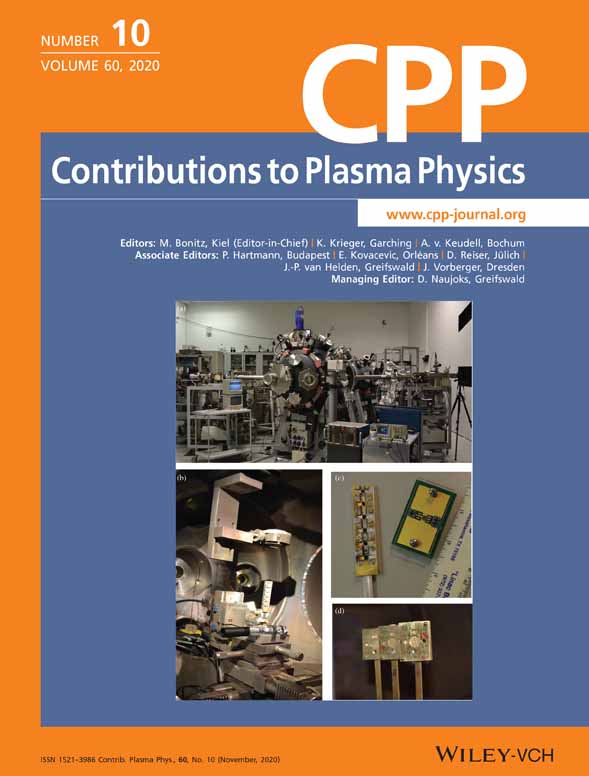X-Rays emission by high-intensity pulsed lasers irradiating thin foils at PALS laboratory
Funding information: Laser-Lab Europe, project PALS N. 001823
Abstract
X-rays and forward ion emission from laser-generated plasma in the Target Normal Sheath Acceleration regime of different targets with 10-μm thickness, irradiated at Prague Asterix Laser System (PALS) laboratory at about 1016 W/cm2 intensity, employing a 1,315 nm-wavelength laser with a 300-ps pulse duration, are investigated. The photon and ion emissions were mainly measured using Silicon Carbide (SiC) detectors in time-of-flight configuration and X-ray streak camera imaging. The results show that the maximum proton acceleration value and the X-ray emission yield growth are proportional to the atomic number of the irradiated targets. The X-ray emission is not isotropic, with energies increasing from 1 keV for light atomic targets to about 2.5 keV for heavy atomic targets. The laser focal position significantly influences the X-ray emission from light and heavy irradiated targets, indicating the possible induction of self-focusing effects when the laser beam is focalized in front of the light target surface and of electron density enhancement for focalization inside the target.




